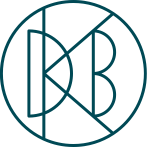Some meditations on work on Vision Pro Eve
A pen and ink-style drawing of a writer’s cabin in the woods created using DALL·E…now I want to go to there
One of the stories I’ve told myself about headsets is that they’re not good for work. Even here in early 2024, the Productivity section of the Meta Quest app store reinforces that; there are so few apps available that the section barely scrolls. The work I do as an investor at Matrix involves a lot of meetings and a lot of email. But even the significantly higher resolution on the Quest 3, which I ordered and set up this week for research purposes, isn’t high enough for reading text to be comfortable. And since I try to meet founders where they are (on every level), I can’t picture asking them to meet me in a Horizon Workroom.
My work is a thin slice of knowledge work, but there are plenty of careers that come down to meeting people and manipulating dense text, from code to email to documents to spreadsheets. I’m excited about the Apple Vision Pro because everything I’ve read and everything I’ve seen makes me think it’s going to work well for that kind of knowledge work specifically: crisp text, most of the apps I’m used to, and the possibility of video calls—though we’ll see whether using Personas (Apple’s quasi-photorealistic avatars for Vision Pro) gets normalized.
Yet it strikes me that I already have all of those features on my computer. So what’s uniquely possible for productivity in the Apple Vision Pro?
More monitors is a clear win for the Apple Vision Pro for work; John Gruber’s review offers a glimpse of what it’s like to arrange native apps in your space. There’s a slight practical issue, which is that the Vision Pro can only mirror one Mac screen at a time. But using a bunch of different Safari windows should be no problem. The other big benefit here is that the “monitors” are portable—you can bring them to a hotel room on a work trip.
But as I reflect on the siren song of “more monitors,” I have to admit that I rarely hook up to even one monitor at home or at the office. In my work, I’m either paying full attention to a full-screen video call or focusing on writing one email at a time—rarely working on two documents side by side. An asterisk here is that I definitely toggle between my laptop screen and iPhone screen all the time while working…so will toggling between visionOS apps arranged in space end up feeling more like that, or more like having an array of monitors?
There’s also the small issue that, when I’m not on video calls, I’ve sustained the college-era habit of computing-while-lying-down on a couch or a bed—head propped up on an armrest or pillows, laptop propped up on bent knees. This habit is so ingrained that I actually find it hard to write more than 100 words at a time at a desk…it’s oddly not coded as “focus mode” for me. This brings us to the next unique possibility…
A better angle for computing-while-lying down. Based on my horizontal habit, I’ve long half-jokingly half-seriously lusted after these zero gravity workstations that arrange monitors above your head as you relax on a monstrous piece of furniture resembling a style-free recliner. And now I’ll have exactly that experience available in a compact device that doesn’t take up a whole room of my home. The key here will be how it feels to prop up a bluetooth keyboard on my knees; in my current setup, I rely on the wrist support below my laptop’s keyboard to make the whole arrangement barely ergonomic. But apparently you can use your laptop keyboard as an input device for visionOS apps, so that’s probably what I’ll do.
Finally, the third “real” productivity justification for the Vision Pro that I can foresee for now is…
Focus. When I work from home, there are constantly open loops tugging at the edges of my attention—dishes to unload, laundry to fold. This effect is of course especially strong whenever I’m trying to get myself to work on something difficult, when the impulse to procrastinate with something defensible (chores!) is at its strongest. My hope is that the commitment device of donning a headset for a serious computing-while-lying-down session will signal the onset of effort in a less distractible way. Of course, it could go the other way—I could spend ages intermittently checking notifications on my phone while doing light chores to “clear the decks” for focused work, then run out of time to put on the Vision Pro at all.
Something I’m excited for here is seeing how any 3D environments on the Vision Pro support immersive focus. I would love to go to a virtual writer’s cabin in a lush green forest and post up there facing one crisp screen, birds chirping in the virtual distance barely audible through spatial speakers. I hope I get the chance.
There’s one more factor lurking for me that I uncovered while writing this piece: nostalgia. I want to feel the way I did when I bought the first click wheel iPod with my paper route money. I want to spend a whole weekend setting up a new device and discovering everything it can do. I want to work for hours without interruption, the way I did in high school—even though my real life now, the one I love, is interrupt-driven. I want to sleep for three hours, wake up in the middle of the night, get out of bed, smooth the covers, and plop right back on top with my laptop open to finish writing a term paper due at 8am.
In my heart of hearts, what I want most out of the Apple Vision Pro is to get lost in my computer again. And tomorrow we’ll see whether I do.

